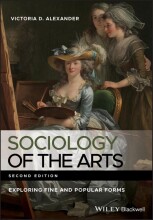Reputation, Space, and Place - Lloyd (2002): Neo-bohemia: Art and neighborhood redevelopment in Chicago
7 important questions on Reputation, Space, and Place - Lloyd (2002): Neo-bohemia: Art and neighborhood redevelopment in Chicago
Lloyd (2002) talks in his article "Neo-Bohemia" about how the culture and economy in "older" American cities has seen some change.
What change is he talking about?
- Exponential industrial growth.
- In the time when the manufacturing economy was at its heights, the "older" American cities expanded and grew out of their strategic location.
- Problems of deindustrialization.
- As the manufacturing has declined in America, such cities have had a difficult time in restructuring and finding a new way to generate jobs and growth.
- A new age of urbanism had emerged.
Lloyd (2002) talks in his article on "Neo-Bohemia" about researches that have studied the changes in the culture and economy of urban areas.
What are the two points those researches make about this subject and what about this does Lloyd criticize?
- Patterns observed by other researchers:
- Decentralization.
- Cities are becoming less centralized and economic activity is more spread out in space.
- Disneyfication.
- Cities are investing heavily in tourism and developing large-scale amenities to increase revenues from visitors.
- E..g, Disneyfication, building of large arenas, entertainment districts.
- Lloyd's Critique:
- Local perspective overlooked.
- The theories of the other researchers emphasize how urban is space is produced by large entities and, in doing so, they ignore the role of local residents.
Lloyd (2002), in his article on "Neo-Bohemia", talks about how CCi workers in Chicago are a useful labour force.
Which 3 points does he make to substantiate this claim?
- Smarter & Cheaper.
- CCI workers have a higher educational level than Chicago's average, yet their incomes are lower.
- Price of autonomy.
- CCI workers, valuing autonomy, view the low wages as a necessary price to pay for their freedom.
- Positive second job attitude.
- Most artists cannot support themselves through artistic endeavors alone, and therefore need to have a second (or more) jobs to support their artistic side.
- Remarkably enough, they don't see their second jobs as "dead end jobs" but find a way to weave these jobs into their narrative of autonomy.
- E.g., the poet bartender.
- Higher grades + faster learning
- Never study anything twice
- 100% sure, 100% understanding
Lloyd (2002), in his article on "Neo-Bohemia", makes a point that emerging industries (especially tech) take other factors into account than the traditional ones, when deciding where to locate their business.
Can you explain what has changed and why?
- Instead of looking at the traditional factors like taxes, convenience, cost of business, emerging industries consider where creatives want to live and work.
- Such as Wicker Park Chicago.
- Why creatives?
- Higher technical skills and knowledge.
- Flexible.
- Most in need of a second job.
- Low wages: Creatives typically trade money for living in cool "gritty" neighborhoods and having a degree of autonomy.
Lloyd (2002) argues that through neo-bohemia, a new
kind of accumulation is occurring which also uses cities. What is this new kind and how does it differ from the old one?
- A new accumulation emerges that is based on the production of symbolic and cultural goods.
- The former accumulation was around manufacture (industrial age).
Lloyd (2002), in his article on "Neo-Bohemia", points out that many artists want to live in underdeveloped and dilapidated urban areas, which they prefer over suburbs.
What are the reasons for this preference?
- Cheap.
- Artist's low wages mean that they want to live in areas that are affordable.
- Gritty fantasy.
- The image of the gritty urban neighborhood feeds into the sense of authenticity and urban danger for artists.
What are the 4 main points of relevance of the article of Lloyd (2002) about "Neo-Bohemia"?
- Contextualize urban cultural production.
- It helps us contextualize cultural production within the urban landscape.
- Parallels Rotterdam.
- While Chicago is larger, parallels with Rotterdam and a lot of other cities can be drawn.
- Grit as economic force.
- Grit can be used by economic actors to extract or accumate value.
- Opportunity of Tech firms.
- While they don't force people to move into dangerous neighbourhoods, tech firms can use the labour pools of CCI workers, who voluntarily want to live in such areas, to their advantage.
The question on the page originate from the summary of the following study material:
- A unique study and practice tool
- Never study anything twice again
- Get the grades you hope for
- 100% sure, 100% understanding































